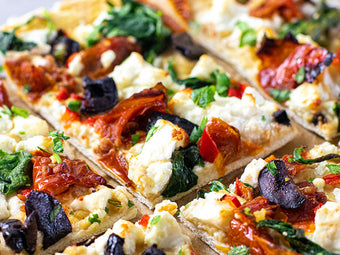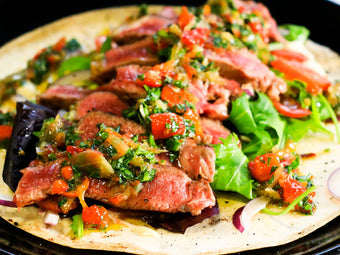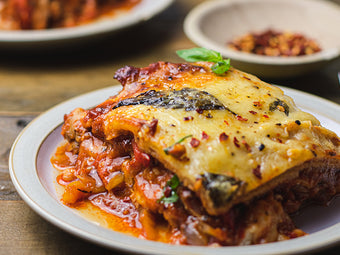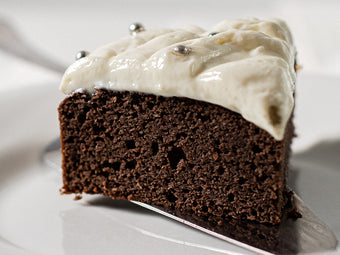Do I have to count calories for fat loss?
So, you want to lose some body fat to feel healthier, or maybe you just want to feel a little more comfortable in your body. But you feel like life is simply too short to spend hours counting up the calories on every label of every food you eat, weighing out exact portion sizes and logging them into some app on your phone to ensure that you hit a certain number of calories for the day. The chances are that, even if you did work to a calorie target, you feel like the calorie goal that you set yourself may not even be right for you because you estimated it based on something you saw online once. Calorie counting just isn’t for you. Regardless of your hatred of the number crunching, you’d really like to drop some body fat.
But can you really lose body fat without counting calories? In short, yes. You do not have to attach yourself to numbers of every food, count your macros and/or your calories to lose body fat.
Here’s the crucial component of any successful fat loss diet. You must be in a calorie deficit. In simple terms, you must consume fewer calories than you expend. Our bodies work on an energy budget, whether those calories are physically counted or not, there is no ‘tricking’ the body into hiding just how many calories that you eat. It doesn’t matter if you are following a high protein, low carb, low fat, keto, paleo, or any other type of exclusion diet. The only way a diet leads to fat loss is by putting your body into a calorie deficit. Fact.
However, that does not mean you have to physically count those calories. There are ways that you can get in to a calorie deficit without involving the GCSE level maths that you thought you’d left behind (a few more than you care to admit) years ago.
1. Make daily simple food swaps
Look for lower calorie versions of foods that you normally eat. For example, swap your 2 slices of bread in your lunch sandwich (200kcal) to 1 piece of Lo-Dough (39kcal); or swap your cheddar cheese to Eatlean protein cheese. Making both of these simple swaps in one day could save you roughly 300kcal per day, whilst increasing your fibre and protein intake, both of which will help satiety (make you feel fuller for longer).
2. Increase your protein intake
Aim to have one serving of lean protein (e.g. 1 chicken breast, 200g fat free dairy) with each meal. This will increase satiety, reduce subsequent hunger and may replace more energy dense food sources within your usual meals. Not to mention, protein is really important for muscle maintenance and building with resistance training.
3. Reduce your portion sizes
Reduce your usual portion sizes with each meal. For example, if you usually have 2 slices of bread with breakfast, switch to 1 slice. If you usually have a snack between every meal, reduce this to 1 snack per day. If you normally have 2 slices of cheese in your sandwich, reduce this to 1.
4. Implement intermittent fasting
Find an eating window that suits your schedule e.g. 12pm – 8pm and eat your meals within this eating window only, sticking to fluids (calorie free) outside of these times.
5. Meal replacement
Change up one meal of your day that you feel could be more healthful, for a better alternative. For example, could your breakfast contain more protein? Or could it be lower in calories? Or more micronutrient dense? Focusing on one meal per day is a manageable but influential option (and this may filter to the rest of your meals throughout the day).
6. Increase food volume
Increase your food volume to increase satiety. Foods that have a low energy density allow you to eat a higher volume for the same number of calories as a lower volume of foods with a higher energy density. Add more low calorie greens like spinach and broccoli to your meals, or replace carbohydrate sources like spaghetti for high volume alternatives like courgetti.
7. Reduce your carbohydrate OR your fat intake
By targeting either carbohydrate or fat, you will likely reduce your overall calorie intake. Evidence suggests there is no benefit of eating low carb vs low fat for fat loss, so go with preference. If you choose to lower carbohydrate intake, replacing your usual carbohydrate favourites with low-calorie alternatives like Lo-Dough will mean you can still enjoy the sandwich life, without the associated calories.
8. Have fun fakeaway weekends
A common mistake people make when dieting is reducing their calorie intake during the week, then at the weekends forgetting everything, adopting the ‘screw it’ attitude and thinking that ‘diet starts again Monday’. Whilst it is ok to have higher calories at the weekend if you have lower calories through the week (calorie cycling), if this is not managed, it can add thousands of calories on to your weekly energy intake. Instead, develop some fakeaway meals that allow you to keep your calories in check without missing the fun. Lo-Dough pizza for under 250kcal? Or takeaway for 2000kcal? Your choice.
9. Practice mindful eating
Focus on your food. Eat more slowly. Eat without distraction. Meditate daily to teach you to be present in the moment and focus on being present as you sit down to eat. Try new foods, new flavours. Evidence suggests that mindful eating reduces binge episodes and may reduce overall calorie intake.
Note:
All of these methods work only when they put you in a calorie deficit. There is no magic to any of these methods, they simply introduce other ways to enter a calorie deficit than having to count calories.
Remember that the most effective fat loss strategies will incorporate cardiovascular and resistance exercise alongside nutritional changes. Cardio work will increase your energy expenditure (enhancing your calorie deficit) and improve your cardiorespiratory fitness. Resistance training will support maintenance and/or growth of muscle mass, super important for metabolic health, maintaining function as we get older and can support aesthetic changes that you may be looking for.
How do you know if it’s working?
The below are some examples of outcome measures that you can use to assess your progress. You will not see changes in each of these each week, but there will be an overall trend over time, provided that you are consistent.
- Body weight will drop
- Waist measurement will drop
- Clothes will feel different
- You will simply feel better, happier, more energy and/or with improved sleep
You can lose body fat without counting calories, but that doesn’t mean that calories don’t count!
- Dr. Emilia Thompson
www.emilia.fitness


Dr. Emilia Thompson is a University Lecturer, Bikini Competitor, and Ph.D. Qualified Nutrition Consultant
Alongside her Ph.D. in Exercise Physiology, Dr. Emilia Thompson also holds a BSc in Sports Biomedicine and an MSc in Sports and Exercise Nutrition. Awarded the Optimum Nutrition Gold Standard Sports Nutritionist of the Year Award, Emilia is passionate about educating people on health, fitness, and nutrition so that people can improve their body composition, relationships with food, and self-confidence.n MSc in Sports and Exercise Nutrition. Awarded the Optimum Nutrition Gold Standard Sports Nutritionist of the Year Award, Emilia is passionate about educating people on health, fitness, and nutrition so that you can improve your body composition, relationship with food, and self-confidence.










